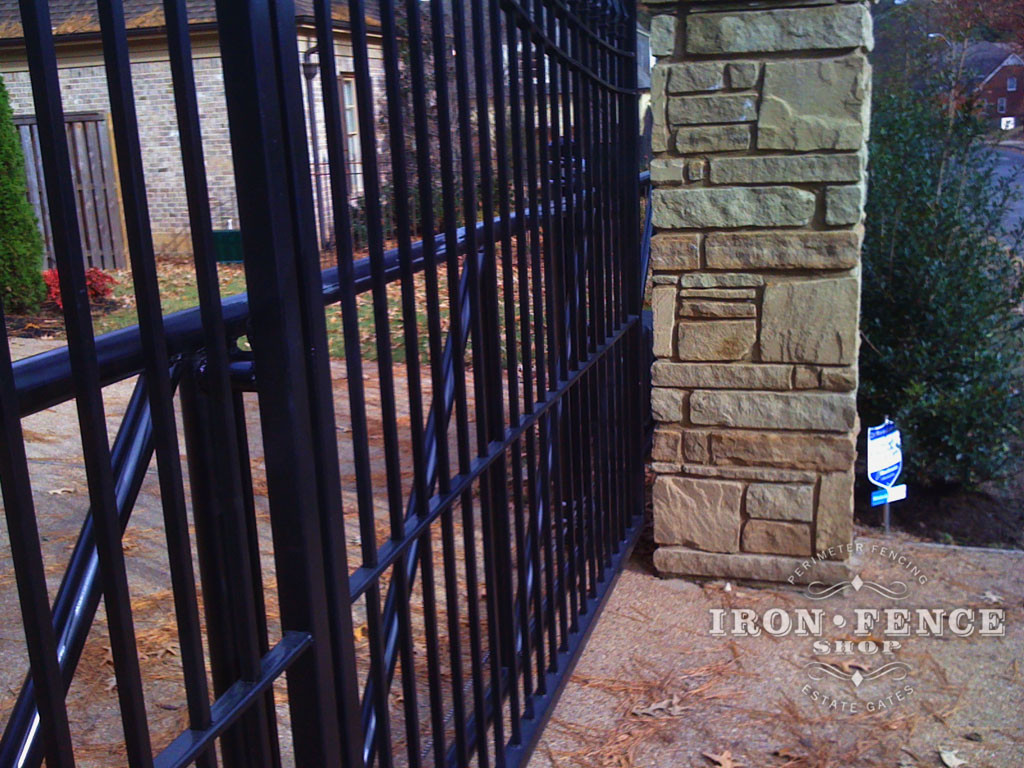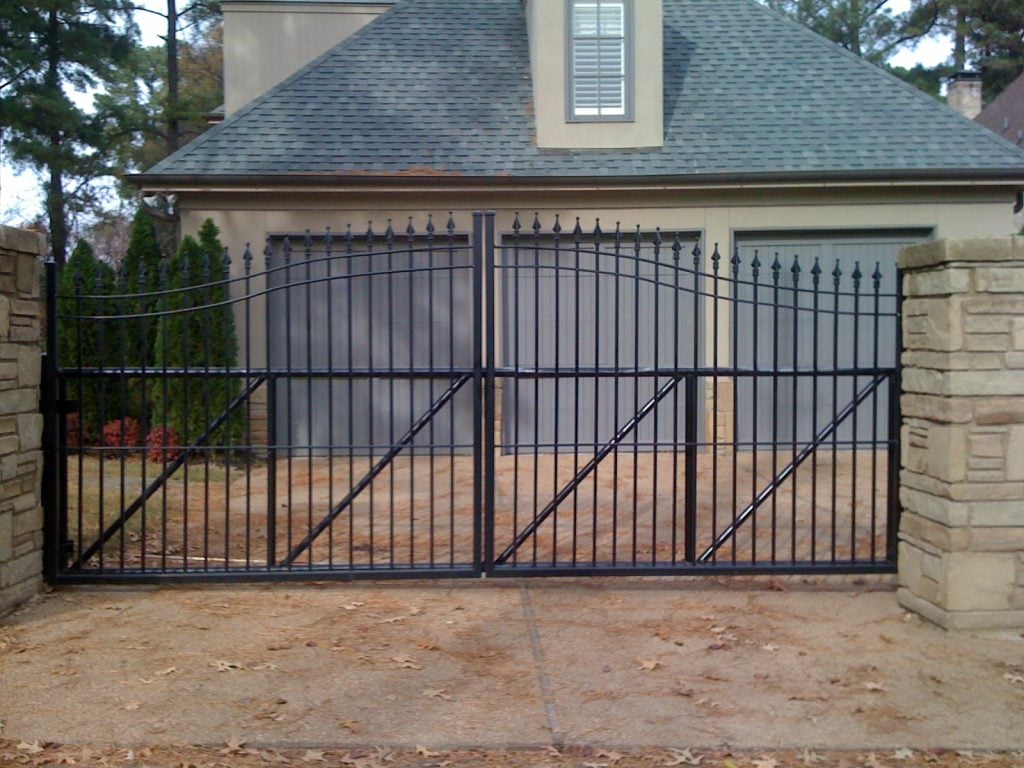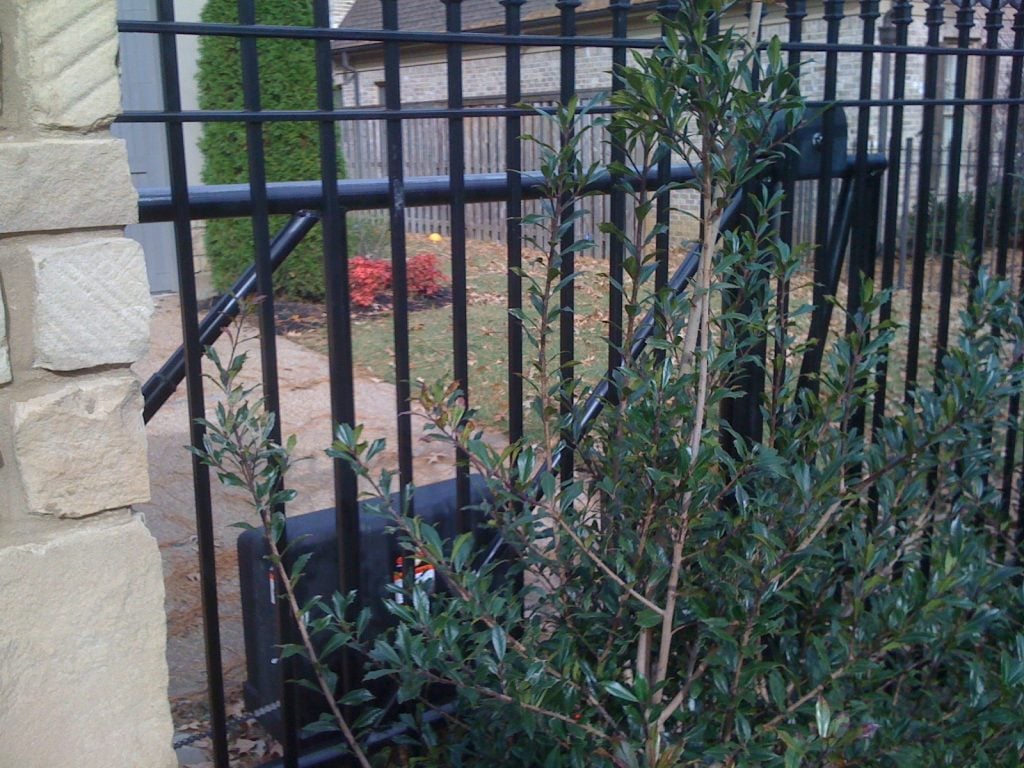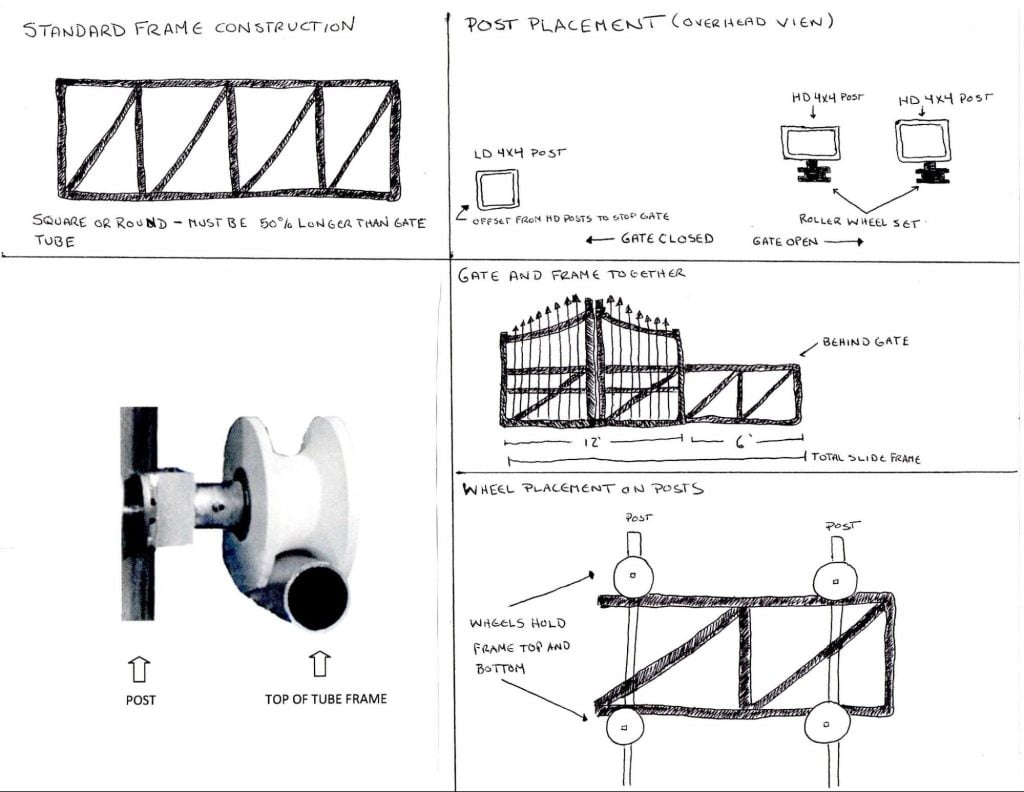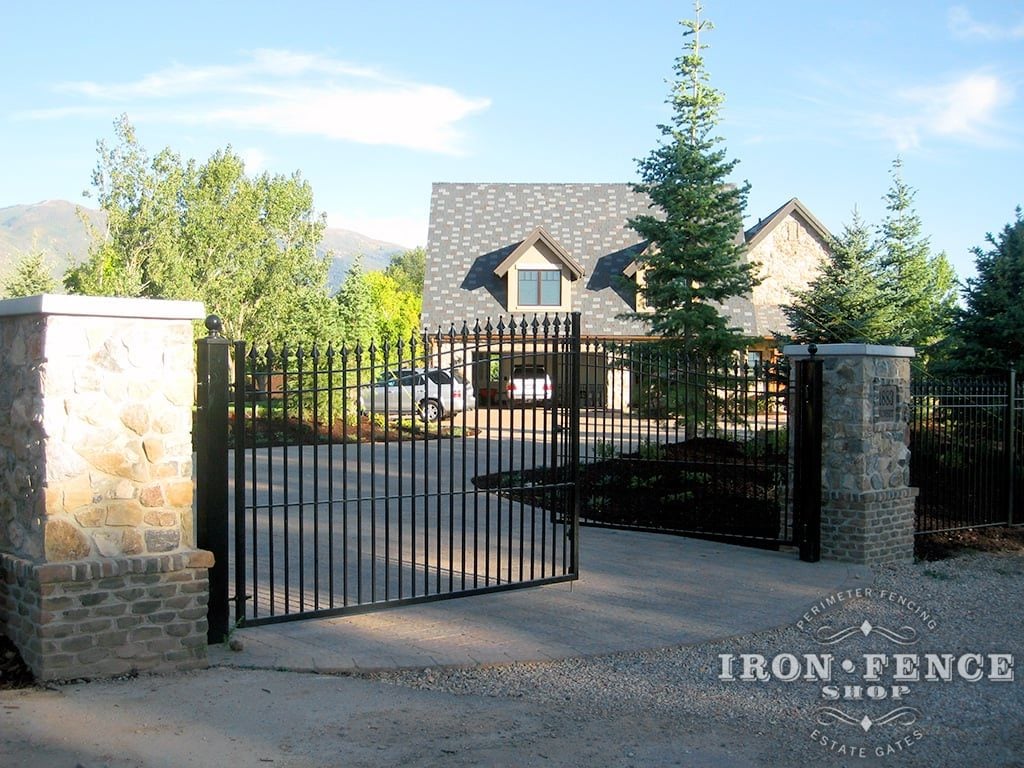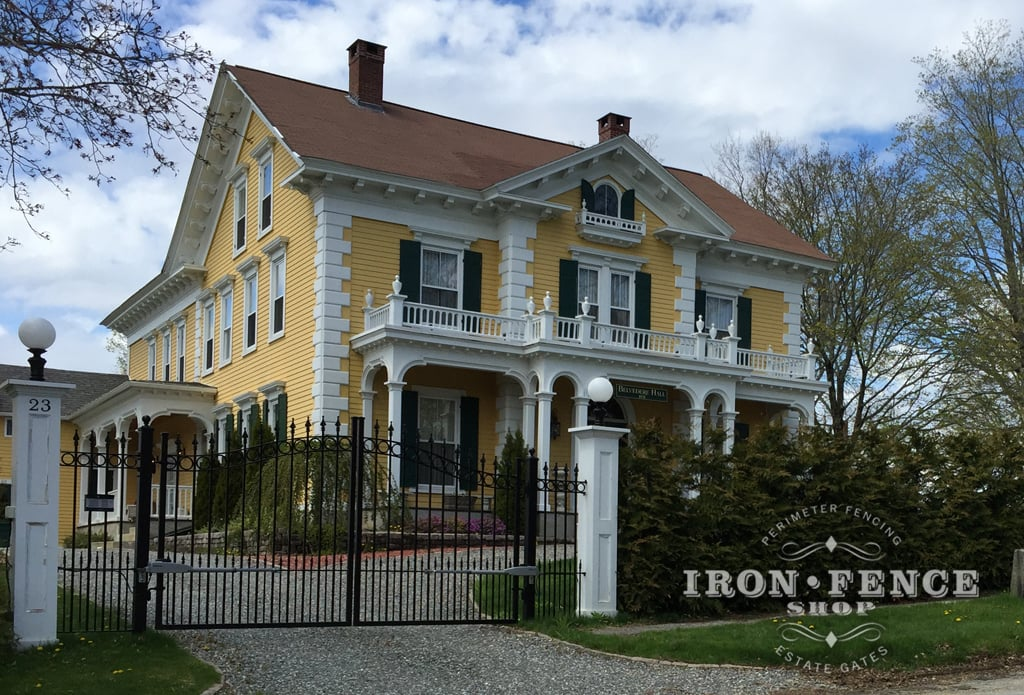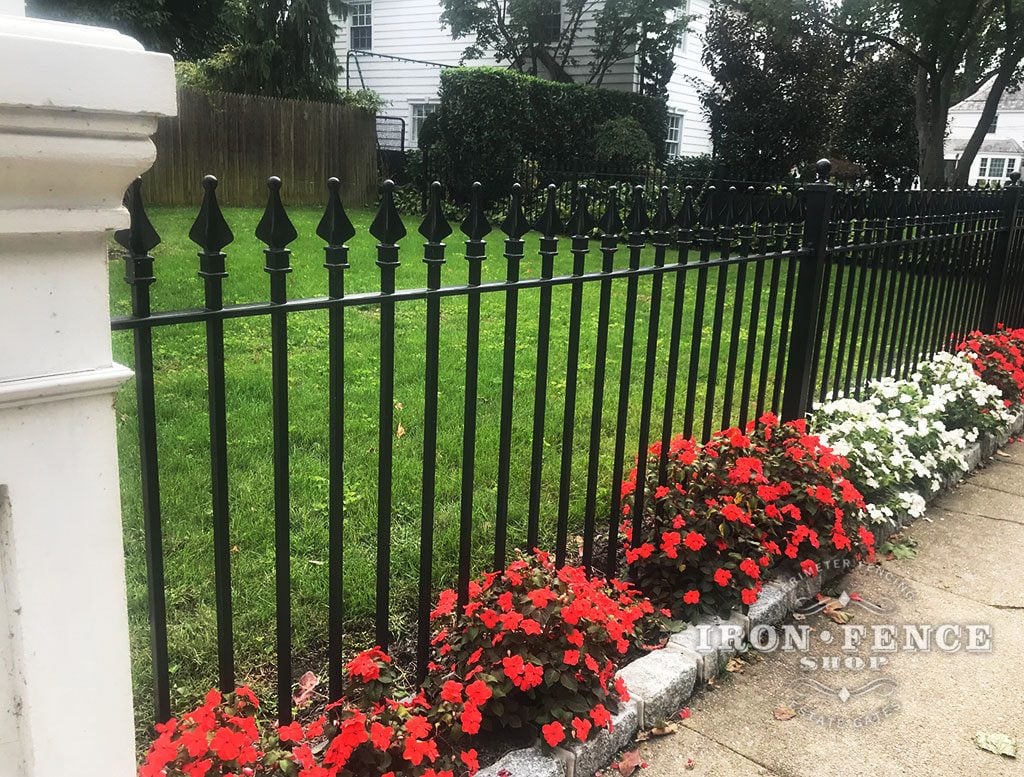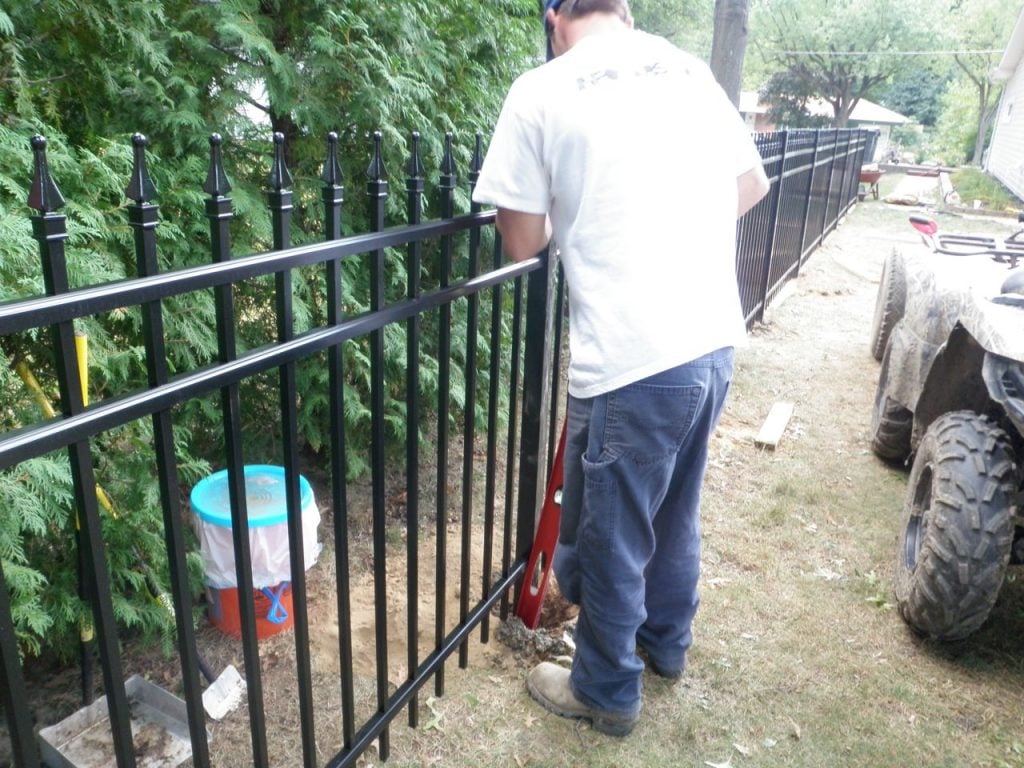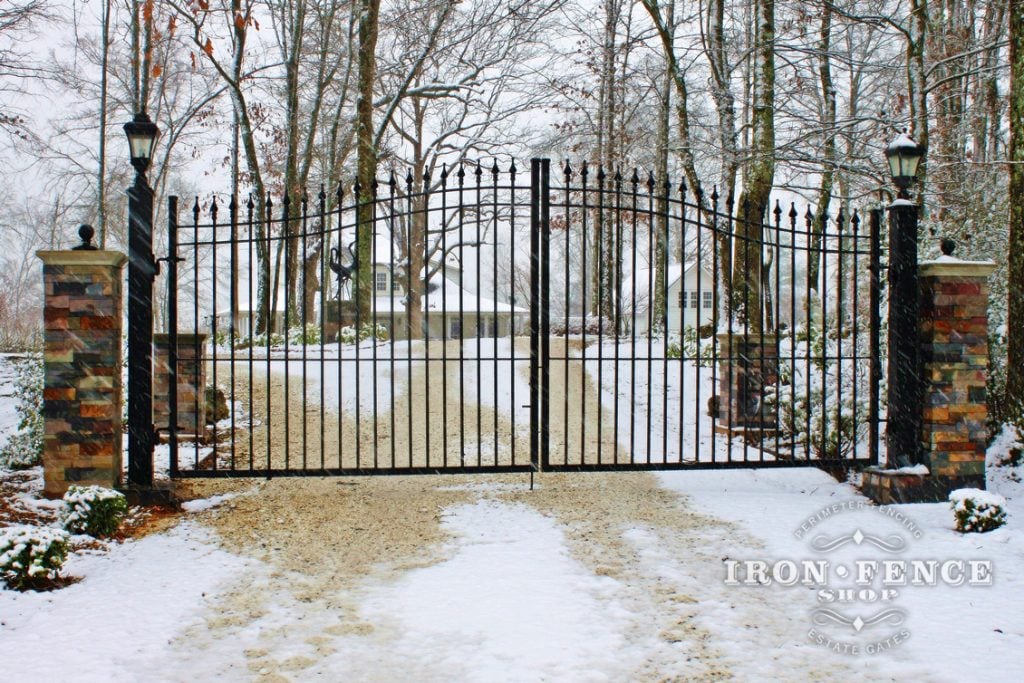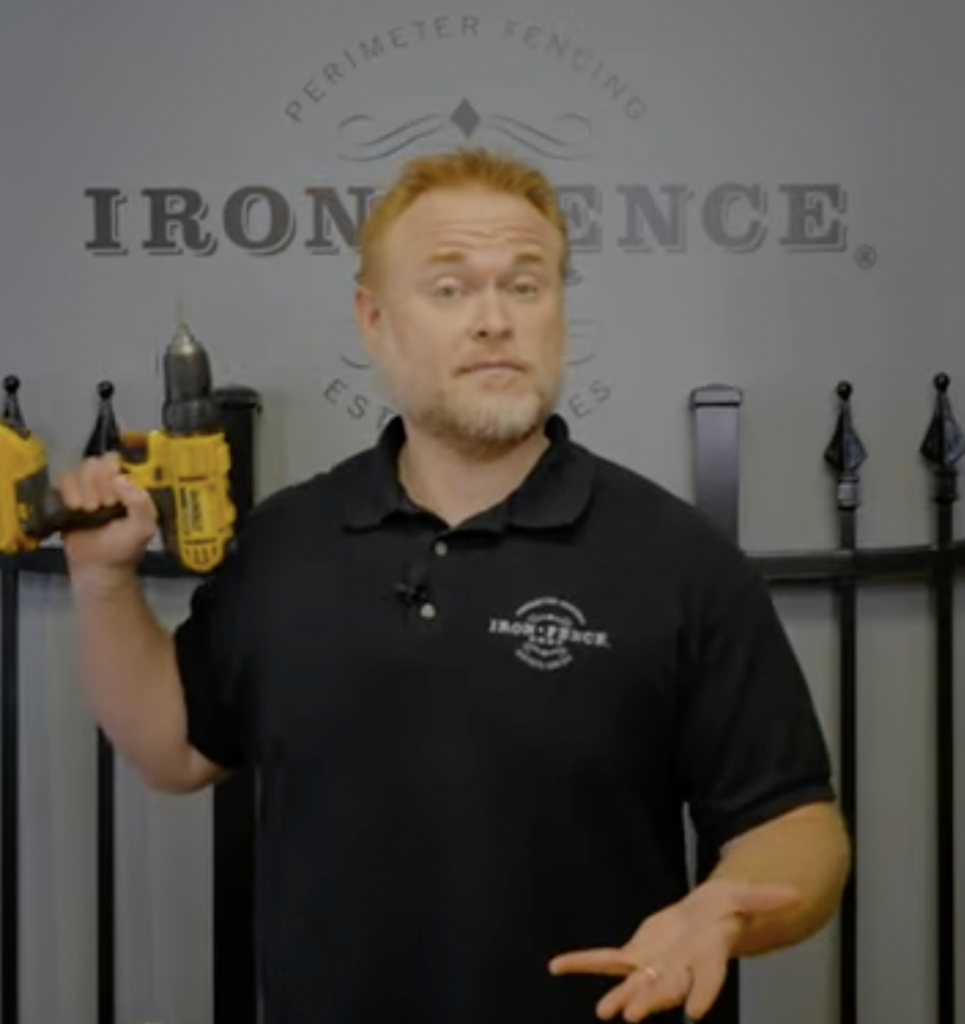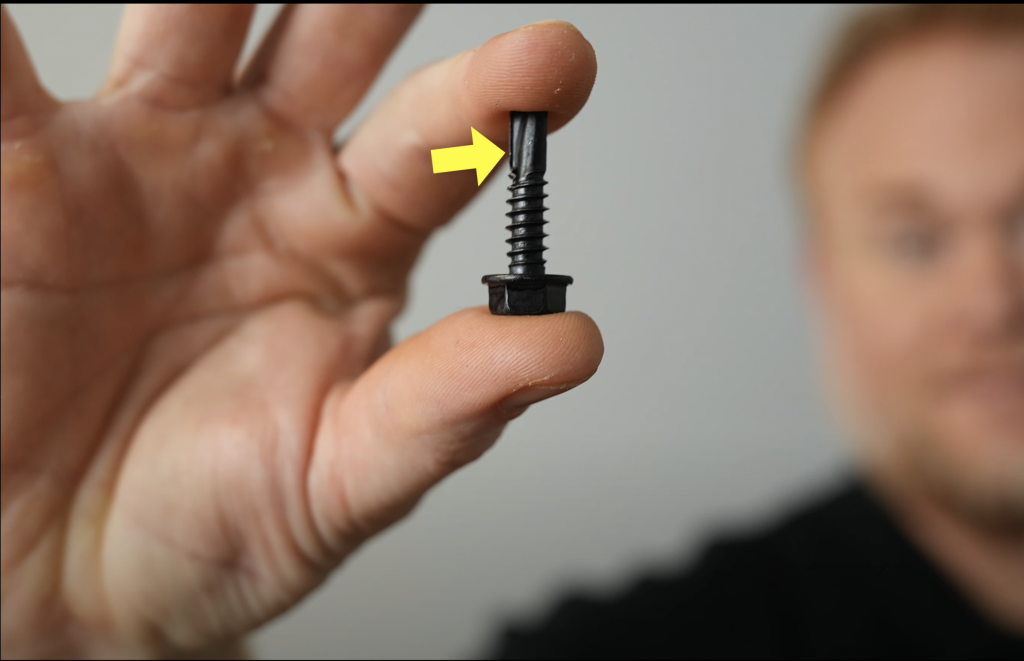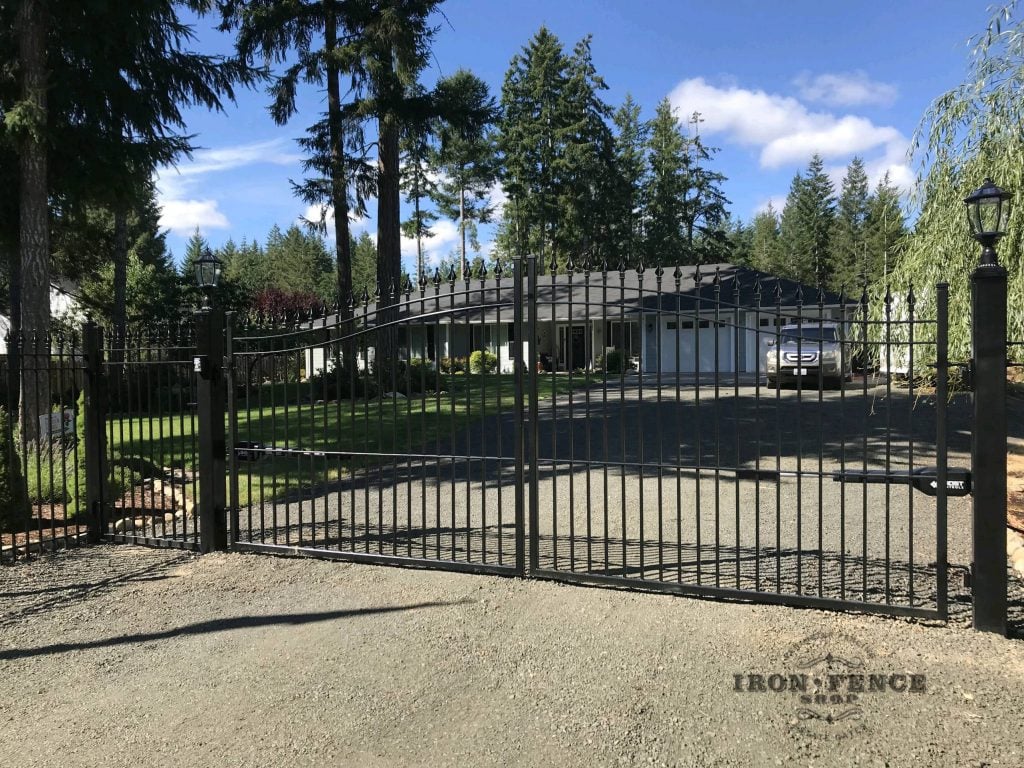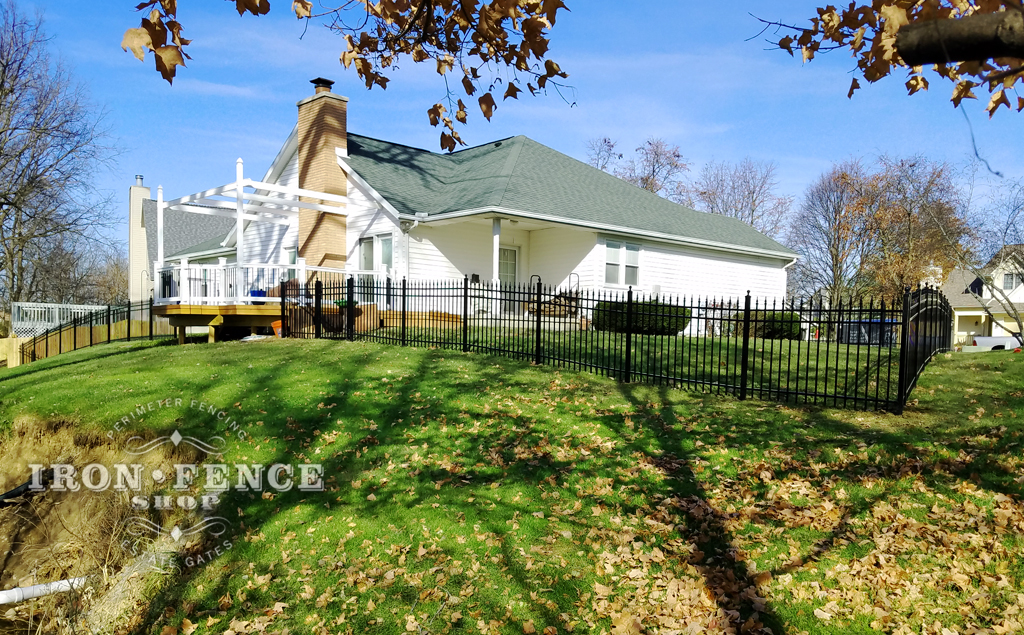
Aluminum fences are a versatile, stylish, and practical choice for enhancing the appearance and functionality of any property. From clean and classic designs to decorative and safety-focused options, aluminum fencing offers a wide range of styles to suit various needs and preferences.
Whether you’re looking to add curb appeal, define boundaries, or ensure poolside safety, there’s an aluminum fence to perfectly match your vision. Explore the unique characteristics of different aluminum fence types to find the ideal solution for your space.
Classic Aluminum Fence
The Classic Aluminum Fence is characterized by its straightforward design, seamlessly blending into a variety of architectural styles. Its vertical pickets and evenly spaced rails create a traditional aesthetic.
Optional accents such as decorative finials or arched gates can further enhance its traditional charm. The Quad Flair Finial from Iron Fence Shop is crafted using a sand casting process instead of die casting, giving it a subtly rougher and more organic texture. True to the standard of a quality fence, each finial is securely welded to every picket, never glued or screwed.
This aluminum fence style is well-suited for defining property lines or creating a welcoming perimeter with a subtle, classic look.
Smooth Top Aluminum Fence
The Smooth Top Aluminum Fence is recognized for its sleek design, incorporating a continuous top rail that creates a clean, modern appearance. Unlike traditional fences with exposed picket tops, the smooth top rail eliminates sharp lines or protrusions, delivering a uniform, streamlined profile that blends seamlessly into contemporary landscapes.
This aluminum fence style is particularly popular for those wanting complete lines, as the smooth top rail creates a visually cohesive finish. It’s available in multiple configurations, offering a choice of picket spacing or additional horizontal rails for custom design possibilities.
Pool Code Aluminum Fence
The Pool Code Aluminum Fence is specifically designed to meet the safety requirements for pool enclosures, ensuring compliance with local regulations. Its fence height, picket spacing, and self-latching gate options are crafted to provide a protective barrier. The design allows clear visibility into the pool area, blending safety with practicality.
Iron Fence Shop’s pool-style aluminum fence is designed for safety and functionality. Its smooth top rail, flush bottom rail, and height meet the height requirement of the National BOCA Pool Code and most local pool codes. This versatile design also works well as a barrier for patios, decks, or atop walls when paired with our welded post flanges.
Ornamental Aluminum Fence
The Ornamental Aluminum Fence stands out with its decorative design elements, offering a sophisticated touch to any property. Intricate patterns, arched tops, or decorative finials can be incorporated into the design, elevating it beyond a typical fence. The ornate details make it ideal for homeowners looking to enhance the aesthetic appeal of their space while creating an eye-catching focal point.
This fencing type is available in a variety of styles and finishes, allowing for a high degree of customization. Whether featuring geometric patterns, scrollwork, or other design flourishes, this fence style serves as both a functional boundary and a stylish statement piece. It complements gardens, driveways, and entryways, providing a finished and polished look to any setting.
Tip: Choose an aluminum fence product with durable finishes and customizable options to suit your space and preferred style. Iron Fence Shop’s aluminum fence panels, posts, and gates go through a detailed multistage cleaning process and are coated with a TGIC fade-resistant polyester powder coat, ensuring superior durability and long-term performance.
What Are the Benefits of Different Aluminum Fence Types?
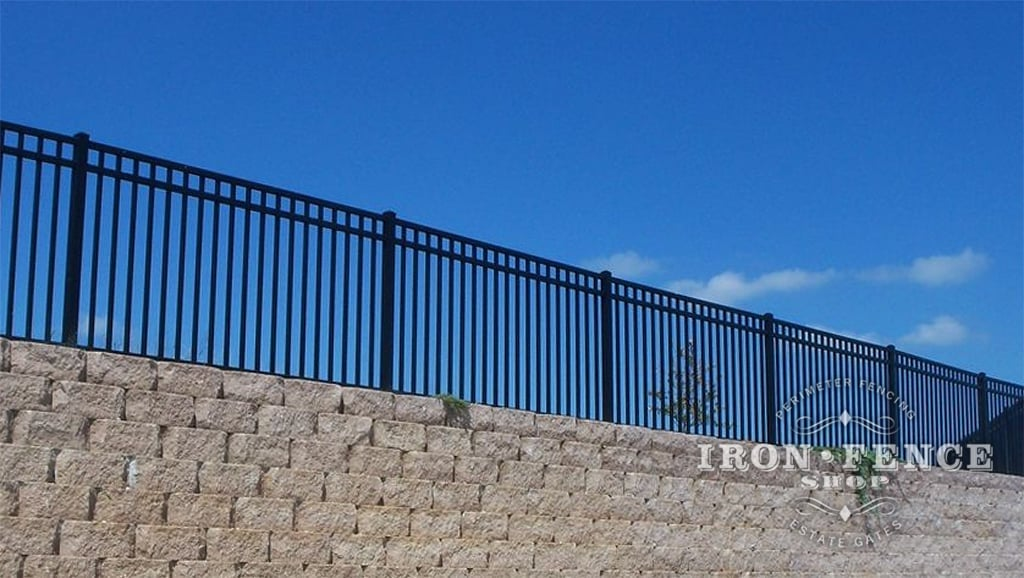
Aluminum fences are highly valued for their durability, versatility, and low maintenance, making them an excellent choice for a variety of property needs. Each type of aluminum fence offers unique benefits tailored to specific functions, styles, and safety requirements. Here’s how different aluminum fence types can enhance your property’s value and appeal:
- Classic Aluminum Fence: Ideal for defining property boundaries or creating timeless curb appeal, its understated design pairs seamlessly with both modern and traditional architecture. The simplicity ensures long-lasting elegance with minimal upkeep.
- Smooth Top Aluminum Fence: Perfect for contemporary homes or businesses, its streamlined design delivers a sleek, polished aesthetic. With a continuous top rail eliminating sharp edges, it ensures safety while maintaining a minimalist look.
- Pool Code Aluminum Fence: Designed to meet safety regulations for pool enclosures, this style prioritizes protecting children and pets while offering a clear, open view into the pool area. It combines compliance with a subtle, attractive design.
- Ornamental Aluminum Fence: For homeowners seeking a decorative, high-end option, this style incorporates intricate patterns, finials, and arched tops. It serves as a focal point with refined elegance.
Additional Benefits of Aluminum Fencing:
- Resistance to Corrosion: Unlike wood or iron, aluminum won’t rust or deteriorate, making it an ideal choice for all climates.
- Customizable Styles: With its variety of finishes and designs, it caters to both residential-grade aluminum fence and commercial-grade aluminum fence needs, offering unmatched flexibility.
- Lightweight Durability: Easy to install yet strong enough to withstand harsh weather, aluminum fencing balances functionality with aesthetic appeal.
Whether prioritizing safety, modern style, or decorative elegance, aluminum fencing is a long-term investment in your property’s beauty.
How Do Color and Finish Impact Aluminum Fencing?
The color and finish of aluminum fences significantly influence their style and performance. A range of color options allows property owners to match their fences to their home’s architecture and landscape.
Powder coating is a great finishing technique, enhancing durability by resisting chipping, scratching, and fading. This process creates a smooth and uniform appearance while improving the fence’s ability to withstand harsh weather.
Textured finishes that mimic the classic look of wrought iron or wood offer a traditional aesthetic without the upkeep, making them a great option to enhance your space with timeless charm
Color and finish play a key role in functionality. Light colors, like white, reflect sunlight to minimize heat absorption, while darker hues, such as black, offer excellent heat retention and work well in colder climates. Choosing the right color and finish ensures a stunning, durable fence that aligns with your preferences and suits the environment.
Enhance Spaces with Aluminum Fencing
Ready to transform your outdoor space with a stunning aluminum fence? Explore Iron Fence Shop’s exclusive range, featuring authentic detailing and superior rust-inhibition for lasting beauty.
Don’t wait—experience the personalized service and expert guidance that sets us apart. Check out our aluminum fence styles now and find the perfect fence to elevate your property!
 Free Shipping over $5,000
Free Shipping over $5,000
 15 Years in Business
15 Years in Business
 18mo No Interest Financing
18mo No Interest Financing
